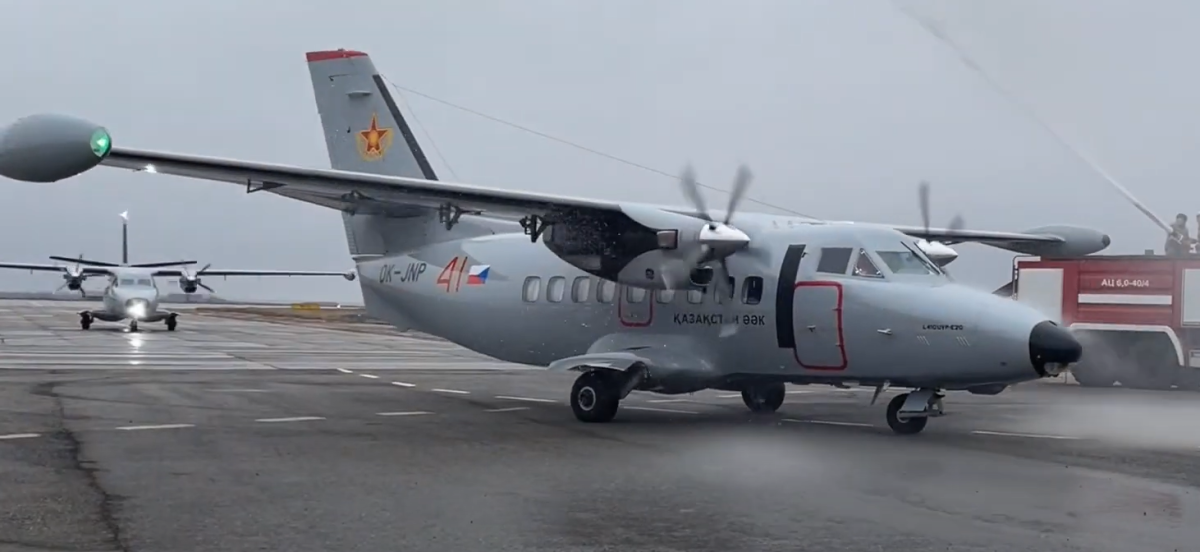The aircraft attracts attention due to its adaptability to various conditions and reliability.

The Military Institute of the Air Defense Forces has received 2 new L-410 light transport aircraft. Here's what is known about this aircraft, as per Sarbaz.kz.
Czech aviation companies have long been known as manufacturers of efficient combat training aircraft. Across the former communist bloc, including Kazakhstan, there's still demand for the L-39 Albatros combat training aircraft. The L-410, which joined the military aviation institute's fleet, follows this trend.
"Due to its flight and technical characteristics, the L-410 aircraft has been recognized as the most suitable for training future transport aviation pilots of the Armed Forces of the Republic of Kazakhstan and Collective Security Treaty Organization (CSTO) members," said Deputy Commander-in-Chief of the Air Defense Forces Colonel Yerzhan Nildbayev at an event.
The CSTO was mentioned for a reason. Since 2015, within the CSTO, a program of weapon unification has been underway following the Collective Rapid Deployment Forces' exercises in 2014. This decision was made after these exercises. Relevant systems developed for the Russian Armed Forces will serve as the basis for implementing this decision. This is because Russia is the only country in the CSTO with independent developments and production of the necessary equipment. Currently, the Russian Armed Forces also operate 27 L-410 aircraft, and their production is based there.
Aircraft History
The L-410 Turbolet aircraft was developed by the Czechoslovak aviation company Let Kunovice (now Aircraft Industries) and is a twin-engine light turboprop aircraft for regional transport. The idea for the L-410 emerged in the late 1960s in Czechoslovakia. Let started working on the project to create a reliable, economical, and versatile aircraft for use in regional airlines. In 1970, the L-410 prototype made its maiden flight. After successful testing, the aircraft was certified and ready for commercial operation. In 1973, the L-410 Turbolet first appeared in the air as a short to medium-haul passenger aircraft, beginning its commercial operation the same year.
Since 1969, more than a thousand L-410s of various modifications have been produced, with over 800 going to the Soviet Union. However, after the dissolution of the Soviet Union and the Warsaw Pact in the 1990s, interest in L-410 aircraft decreased, and production decreased by more than tenfold (from 50 aircraft per year to two-five). In 2008, the Russian company "Ural Mining and Metallurgical Company" (UGMK) acquired 51% of Let Kunovice's (Aircraft Industries) shares.
Today, the L-410 Turbolet continues to be used in regional aviation in various countries and continues to attract attention due to its adaptability to different conditions and reliability.
Photo: AviavTM
The L-410 is a full-metal high-wing aircraft with two turboprop engines designed to carry 19 passengers, cargo, or perform specific tasks. The aircraft has a robust construction and can operate in extreme climatic conditions, ranging from -50°C to +50°C.
The L-410 aircraft can take off and land on short dirt runways. There are several versions of this aircraft, including passenger, medical evacuation, cargo, and parachute versions. The L-410 family is successfully operated in more than 50 countries.
Specifications
The specifications of the L-410 Turbolet aircraft may vary depending on the specific model. Here are the general specifications common to various versions, highlighting the L-410 UVP-E20 modification, which is one of the widespread and modern versions: